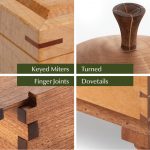We may receive a commission when you use our affiliate links. However, this does not impact our recommendations.
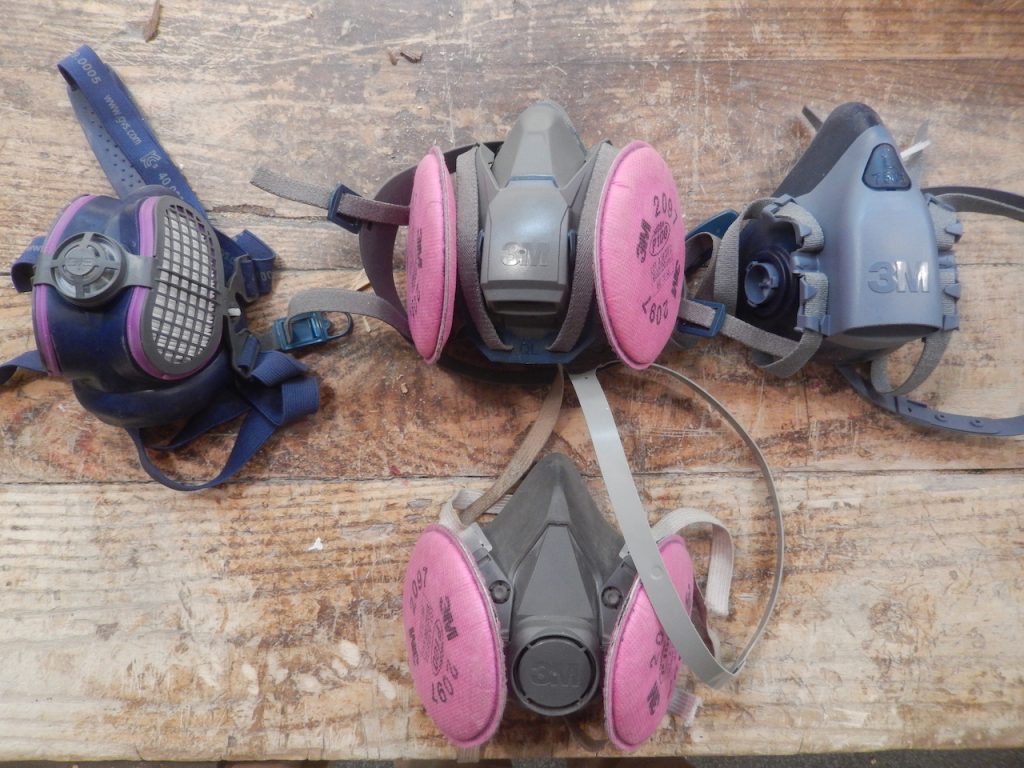 I had this blog entry on the back burner for quite some time now. But, as our current unprecedented set of events has unfolded so rapidly, it became imperative for me to finish and publish it as soon as I could.
I had this blog entry on the back burner for quite some time now. But, as our current unprecedented set of events has unfolded so rapidly, it became imperative for me to finish and publish it as soon as I could.
For the last few months I was trying out a few models of half-face respirators for our woodworking program. Using disposable N95 or N/P100 respirators is certainly an option for anyone who is exposed to wood dust, but for the long run, owning a respirator whose filter you can replace rather than the entire mask, is much more cost effective. In addition, Half-face and full-face respirators are more effective in preventing all sorts of harmful particulates and pathogens from entering your lungs than the lower cost N95 masks – a fact that makes them relevant to our current Covid-19 pandemic.
For my basic comparison (review) I used a few models from 3M and one from the British company GVS.
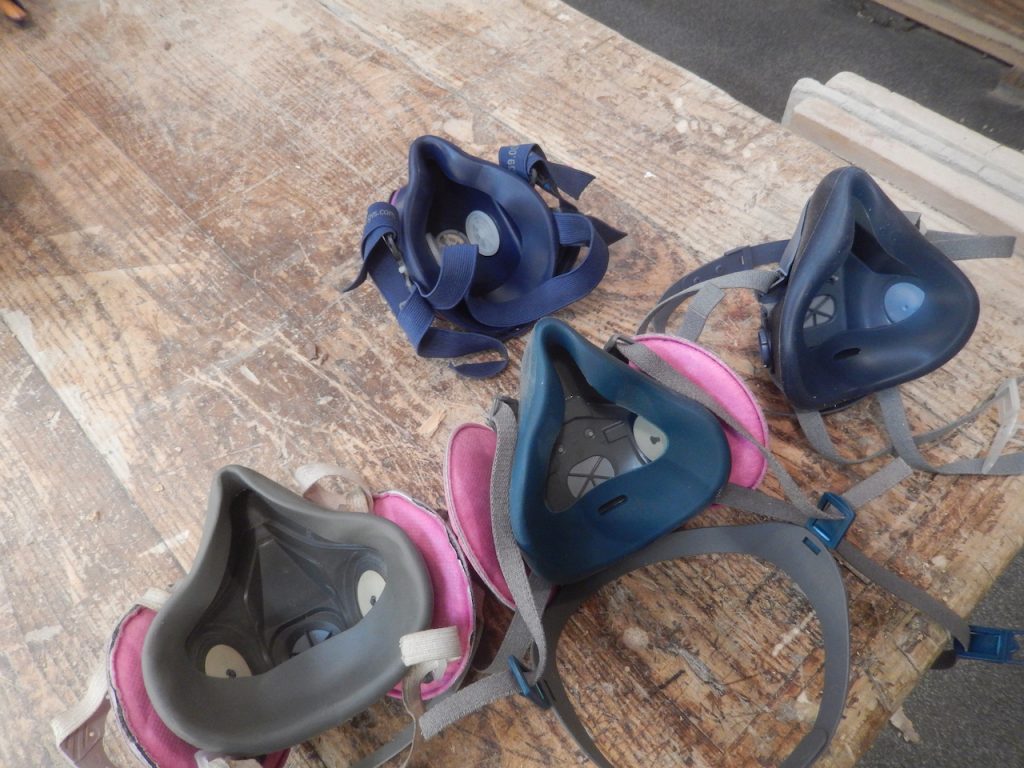
From bottom left to top: The 3M 6300, 3M 6503, 3M 7503, and the British GVS
Shape and fit: All three 3M respirators that I tested have a similar design. They fit over your nose and mouth, and are tightened over your head and neck in a very similar way. The GVS mask has a smaller nose-mouth seal, and a different strapping system than the 3M.
The GVS claim to have a low profile respirator & filter which theoretically should facilitate a better field of vision.
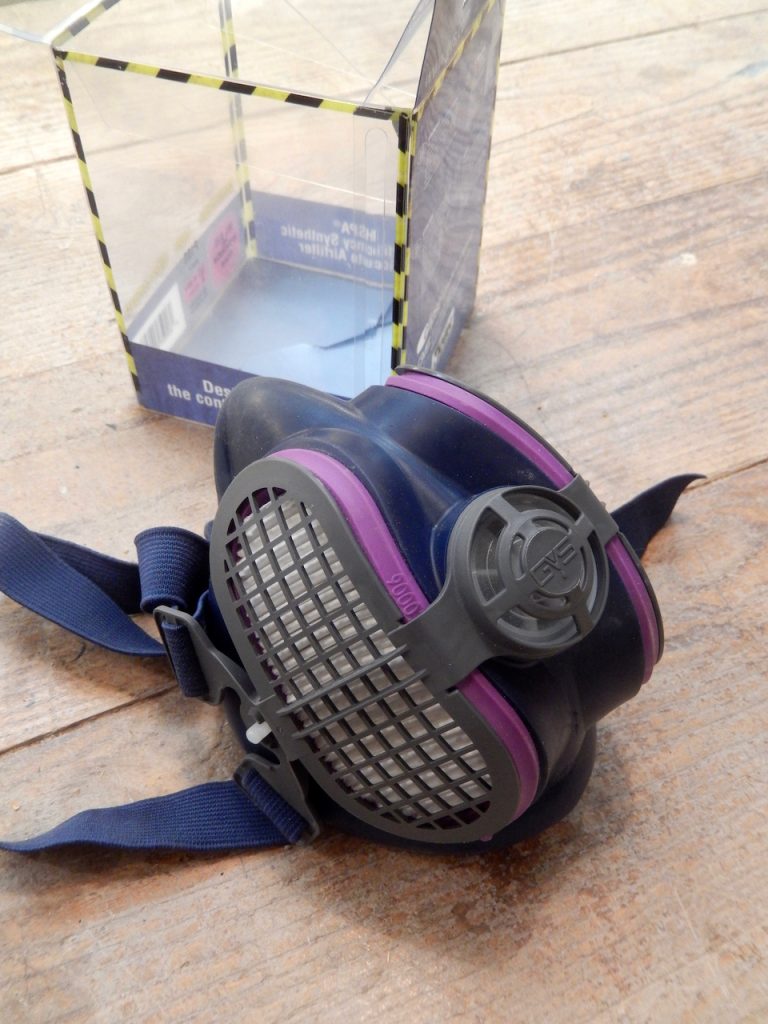
The popular GVS mask with its “tucked in” filters
To evaluate the respirators I decided to concentrate on a few important criteria.
- Comfort of wearing
- Field of vision
- Compatibility with glasses*
- Classroom and long term convenience
- Reliability and serviceability.
* Some of the provided product’s pictures feature glasses worn over the nasal seal, while others show glasses tucked between the seal and the nose.
So here we go…
3M #6300 was the cheapest and most comfortable among the masks that I tested. Because of a slightly narrower nasal bridge seal, it was the mask that accommodated my prescription glasses with minimal interference. The only drawbacks that I could note were that the mask had thinner elastic bands and buckling/strapping systems, which might not last as long as the systems on the other masks.
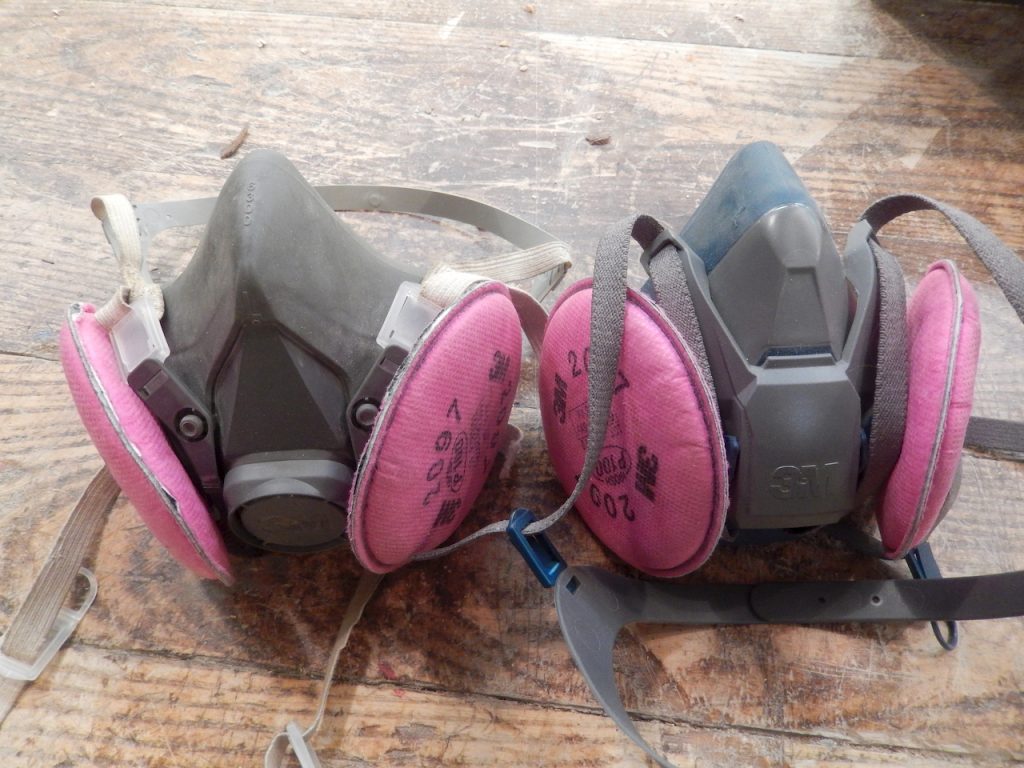
The 3M 6300 (left) and the 3M 6503 (right). The nasal seal of the 6503 is a bit wider.
3M #7503 This is a robust mask, made from state of the art materials and is fitted with an excellent strapping system. The only drawback was the beefier nasal seal that did not allow me to conveniently mount my prescription glasses on it. That said, some glasses have wider bridges which could drop over the mask with no problems at all.
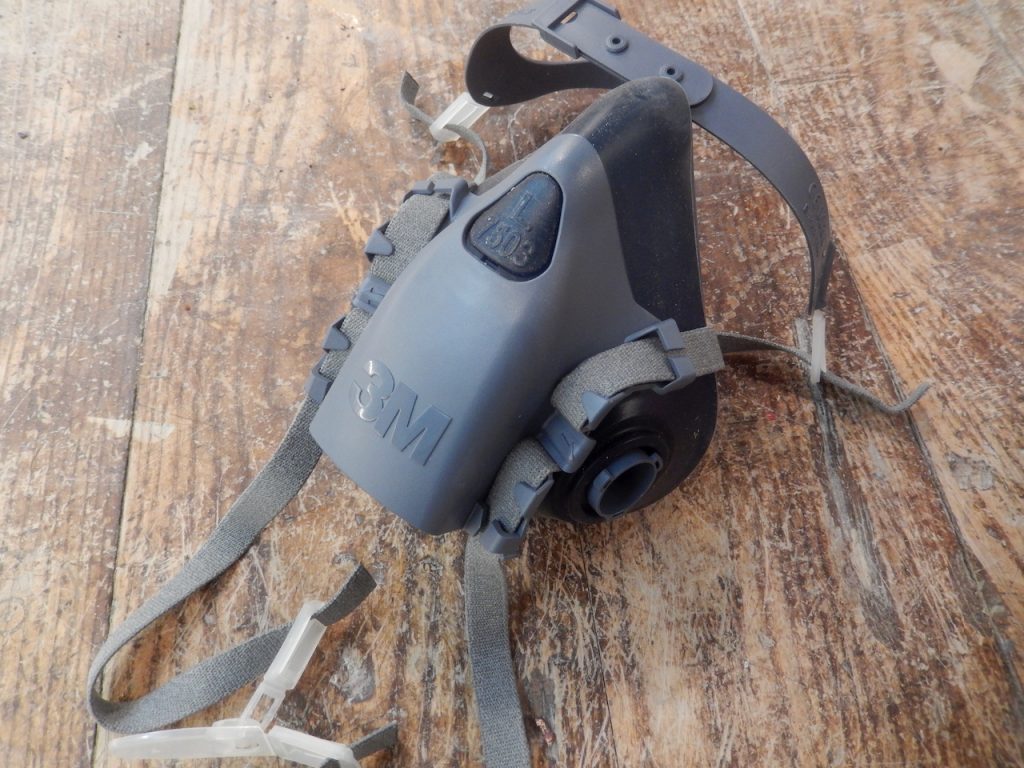
3M 7503
3M #6503 Became my go-to mask while teaching. The #6503 strongest appeal (for me at least) is the mechanism that allows for a rapid partial disengagement of the mask from my face. This attribute allowed me to talk to students without a total removal of the mask. Check the video below to see how it works.

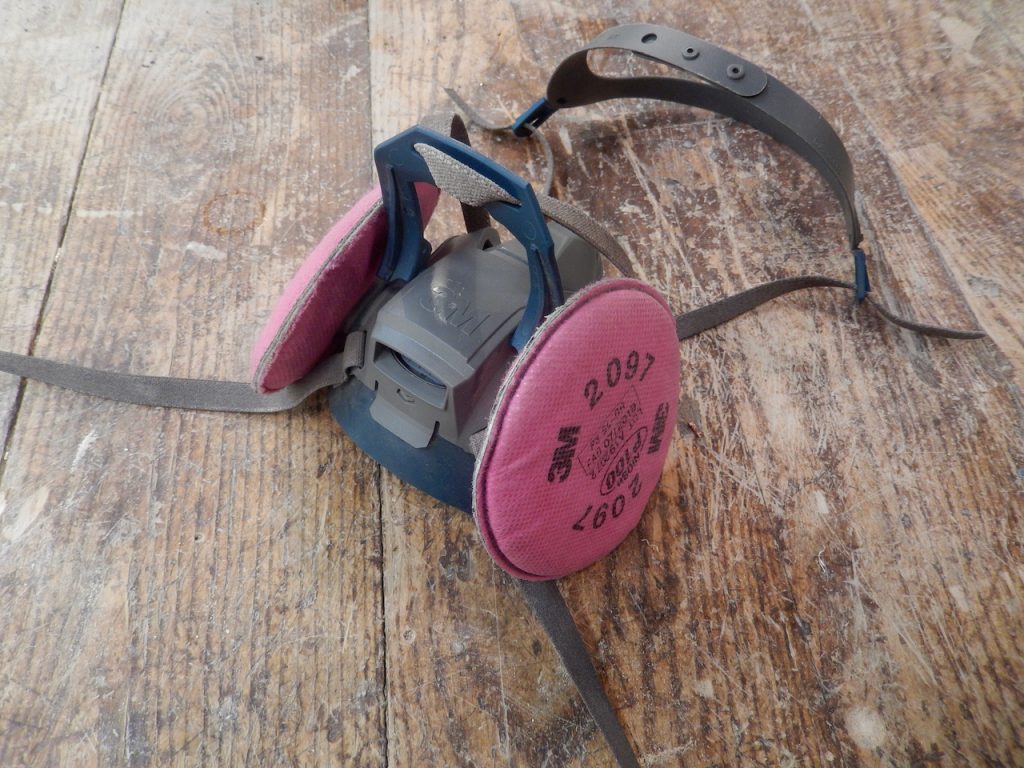
The 6503 has a comfortable to operate lever that allows for a partial disengagement of the mask from the face for drinking and talking.
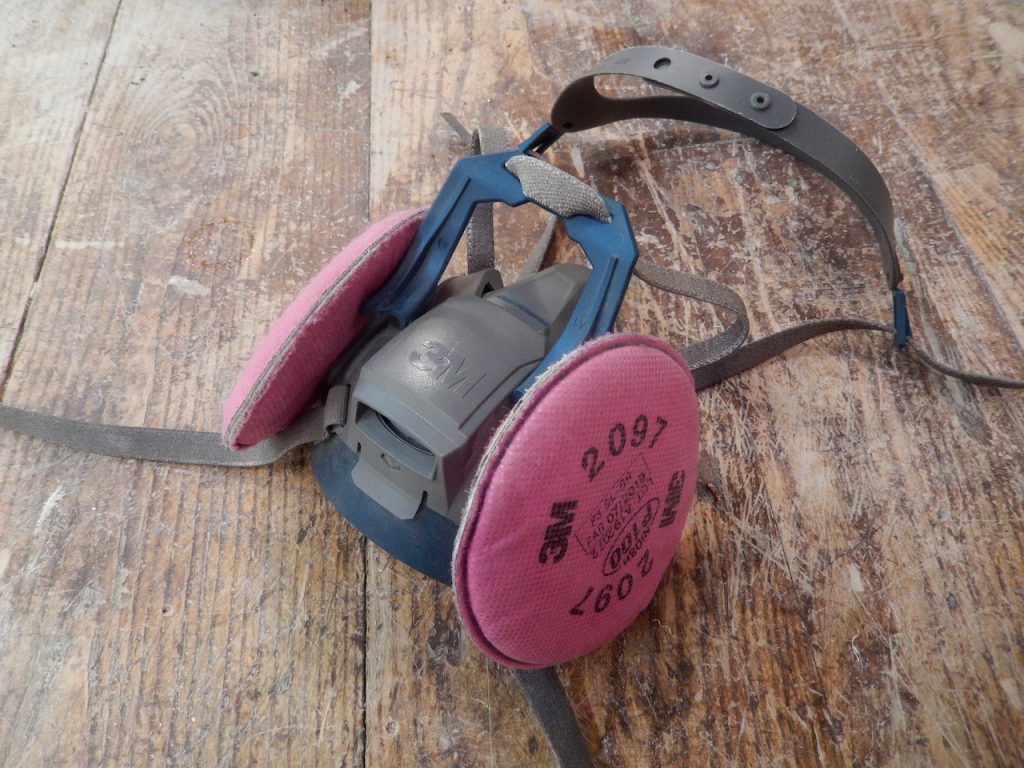
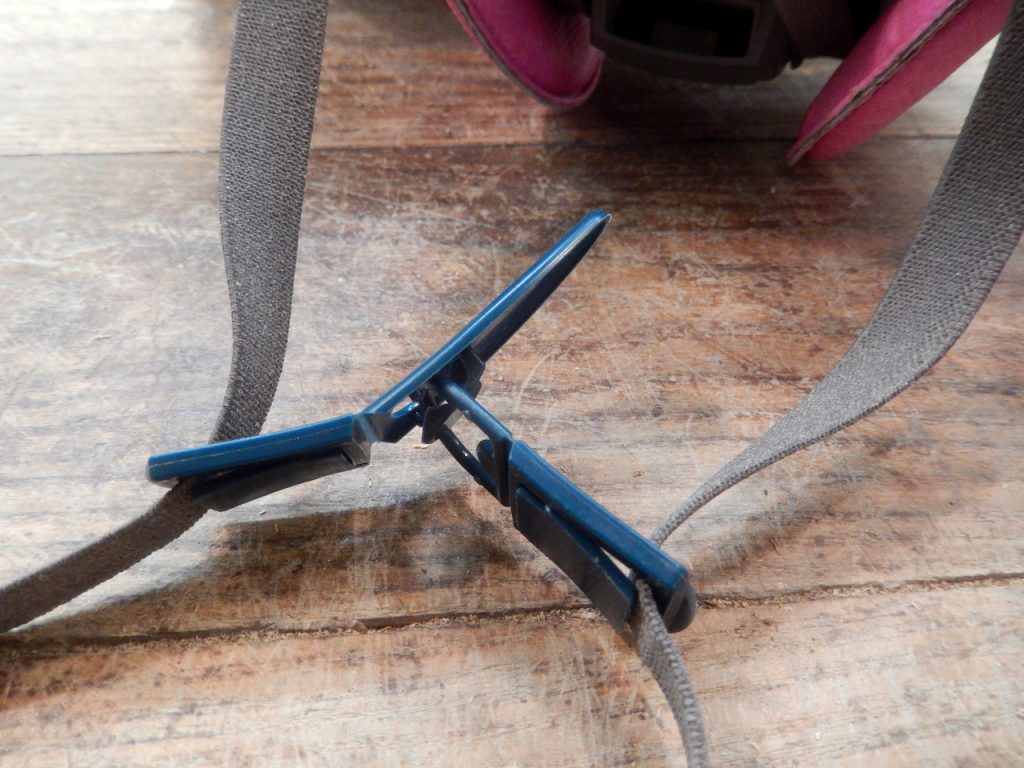
The 3M 6503 has an excellent strapping system. This it the behind the neck buckle with the elastic strap.
GVS Claims to be a low profile respirator (both mask and filter). It is true that if your job requires you to negotiate narrow spaces, then this respirator can be advantageous, as indeed it is more compact. But my experience taught me that although the 3M filters flare out more they are actually located lower than the GVS filters. So between the 3M design and the GVS, in my opinion the 3M facilitates a broader field of vision. Another small issue with the GVS is similar to the one I had with the 3M 6503 and 7503. The GVS also has a broader nasal seal which makes it a bit trickier for the specific prescription glasses that I wear.
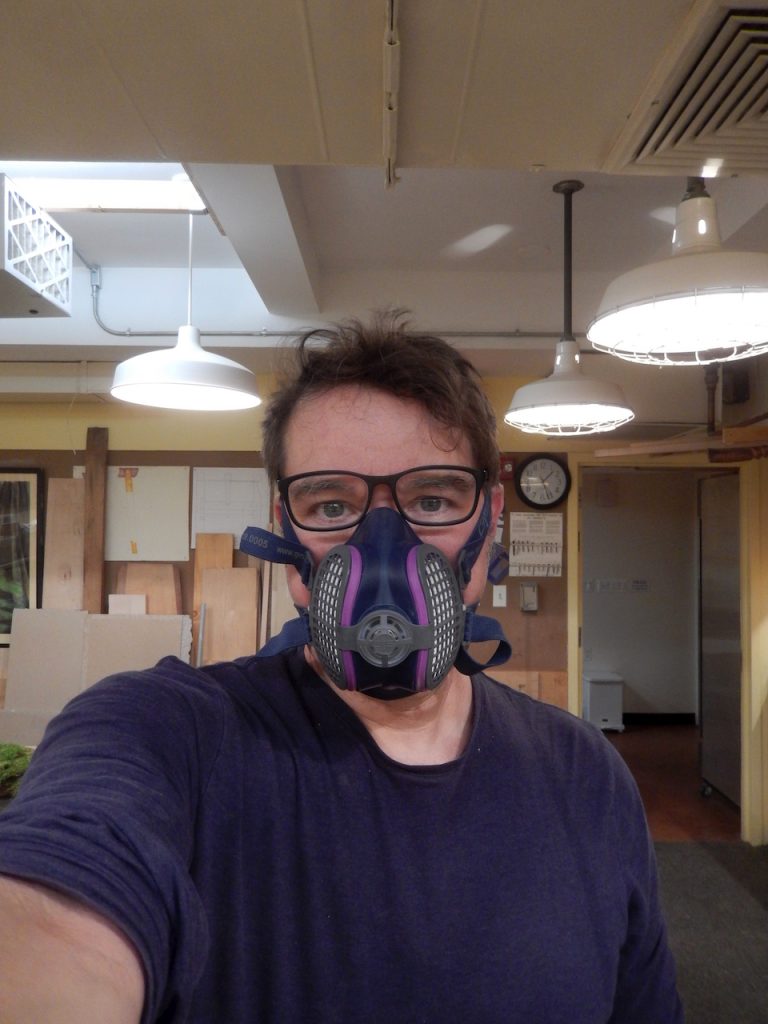
The GVS mask
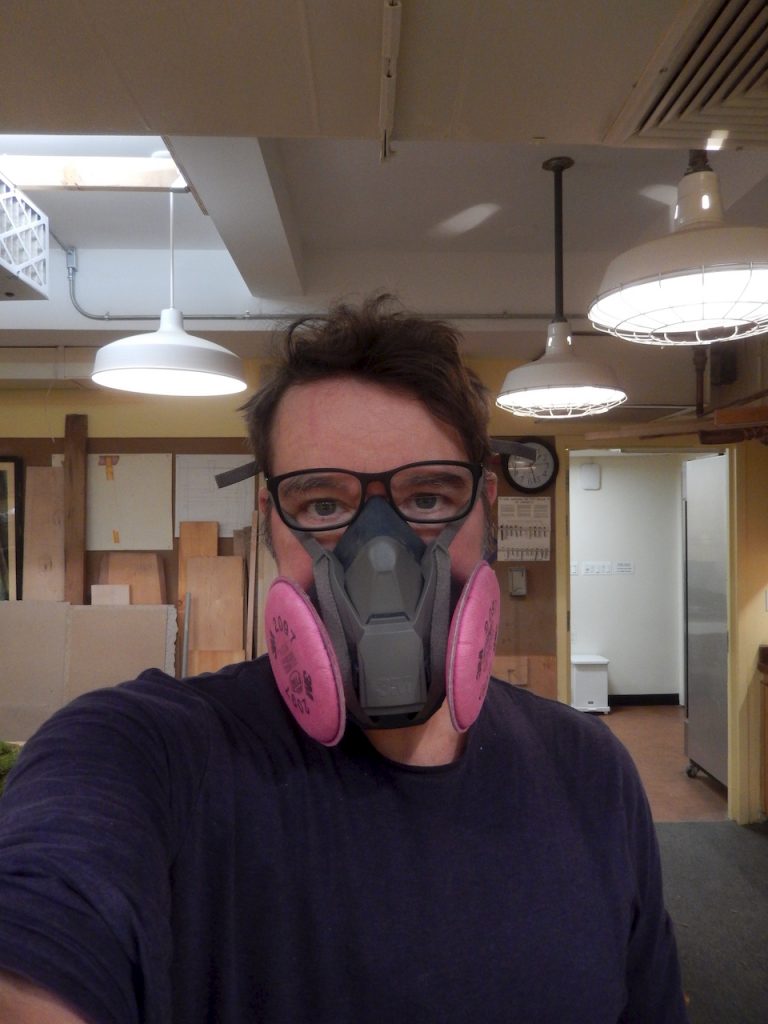
The 3M 6503. Notice that although the filters flair out more than on the GVS, they are located lower on the mask. For me it was more comfortable and I felt that the 3M provided a slightly better field of vision.
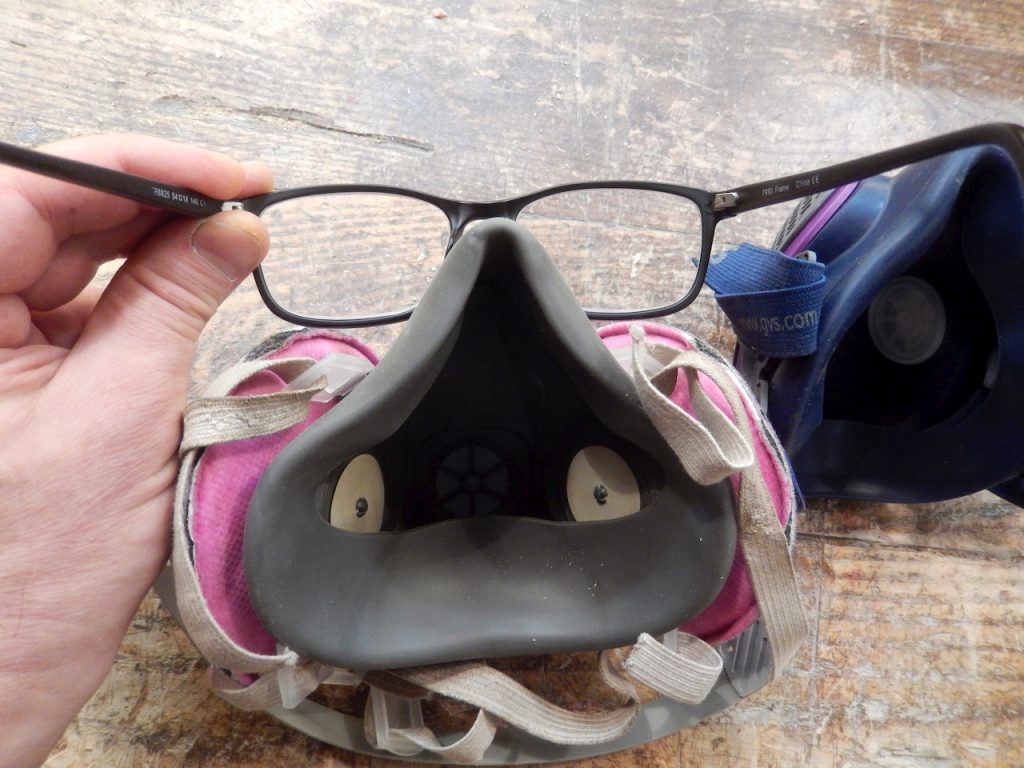
Pairing my prescription glasses with the 3M 6300 was easy. While I prefer to wear the glasses over the Nasal bridge seal, it is possible to tuck them behind the seal.
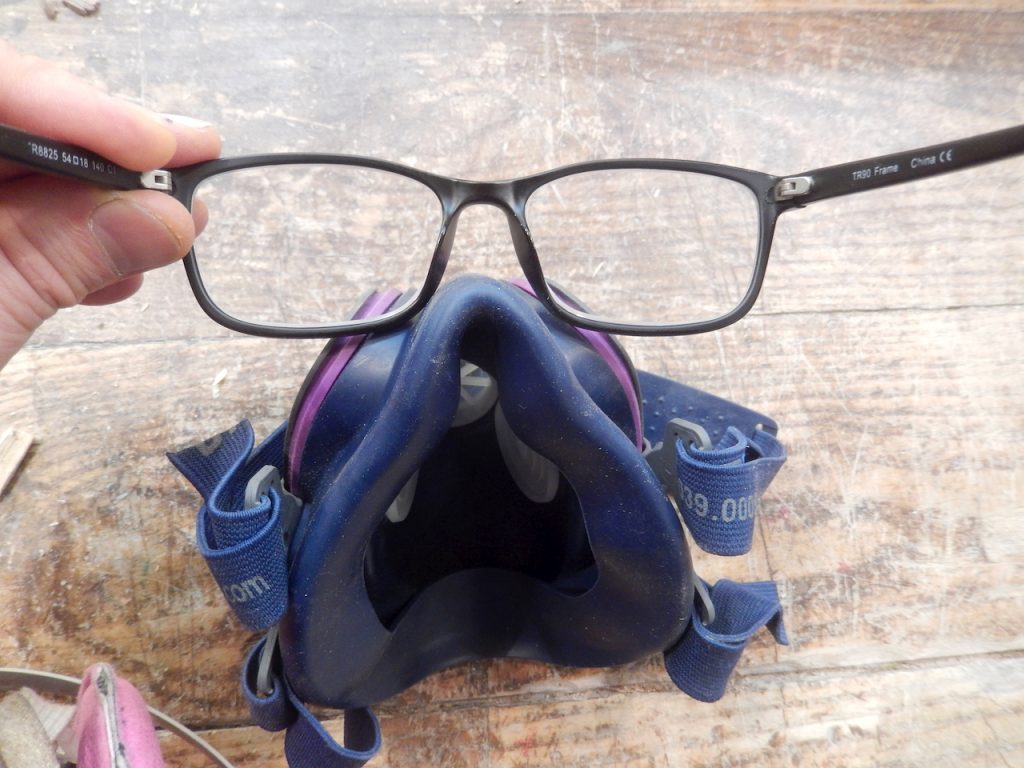
Pairing my prescription glasses with the GVS was challenging.
As for serviceability, all these models can be taken apart and be cleaned. You can also buy spare parts for them such as valve membranes and filter gaskets. Speaking about taking care of your respirators, Marc Spagnuolo created a video that explains how to wash and service his 3M masks. Check out the video here.
What kind of filter to use? For general woodworking uses I recommend a P100 filter with an inner liner of carbon powder. These filters will protect you from small dust particles and other pathogens (such as the Covid-19) but will also do a decent job of absorbing organic vapors such as those omitted from a sporadic spraying of paint. The filters that I use all the time are the 3M 2097. The typical color of this class of P100 filters is pink.
Further reading:
3M Info on respirators and more, during the Coronavirus outbreak
3M™ Half Face-piece Respirator 6000 Series Training Video
I hope that this info is helpful.
Stay safe,
YL
Here are some supplies and tools we find essential in our everyday work around the shop. We may receive a commission from sales referred by our links; however, we have carefully selected these products for their usefulness and quality.








